![]()
The Canon EOS R5 Mark II is coming soon, and PetaPixel has tried it. It represents a significant upgrade over its predecessor, 2020’s R5. However, a lot has changed in the industry since then, and the competition is stiff. So, how does the new R5 II compare to its peers?
Canon bills its $4,299 Canon EOS R5 II as a hybrid beast, capable of recording high-resolution still photos and videos. This pits the R5 II against other high-res full-frame mirrorless cameras like the Nikon Z8 and Sony a7R V — which offer compelling blends of resolution and performance for about $3,500 each at current prices.
There’s also the Panasonic S1R ($3,700), but it’s omitted from the comparison due to its age and heavy still photography focus. And there’s the Nikon Z7 II, which is a good camera that offers slightly better image quality than the Z8. Still, the Z8 is more suitable competition for the R5 II, given their prices and overall performance.
With all that said, how does the R5 II compare against the excellent a7R V and Z8?
Image Sensor: Resolution and Image Quality
Image quality is a powerful part of the original Canon EOS R5’s lasting appeal. Canon hopes to continue that with the newly developed backside-illuminated stacked sensor in the Canon EOS R5 Mark II. Like before, it’s a 45-megapixel sensor, but it’s now stacked, promising reduced rolling shutter, faster readout speed, and improved overall performance (and a blackout-free EVF).
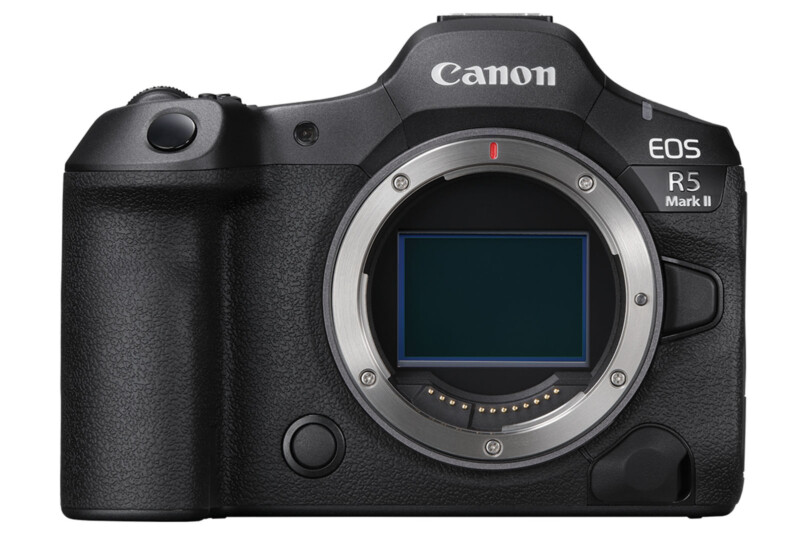
45 megapixels is a lot and puts the R5 II in the company of the 45.7-megapixel Nikon Z8. These cameras lag behind the a7R V and its 63-megapixel sensor, but all three cameras are squarely in the “high-resolution” segment.
During limited hands-on time with a pre-production EOS R5 II, its image quality was very good. It will be interesting to see how the R5 II’s new sensor performs in lab testing, as the R5 is one of the top performers in terms of photographic dynamic range at Photons to Photos. It is slightly better than the a7R V at base ISO and between 1/3 and 1/2 of a stop better than the Z8. While image quality is much more than dynamic range, the R5 II promises exceptional performance there.
The R5 sensor’s biggest weakness was its rolling shutter, which Canon has addressed well by moving to a stacked sensor design. Plus, the R5 II has the same DIGIC guts as the new flagship R1, which will help add more speed to Canon’s latest high-res camera.
Verdict: In the image sensor department, the Canon EOS R5 II is looking mighty fine. The Sony a7R V has more megapixels, but the R5 II isn’t far off the mark and promises a more compelling blend of image quality and speed. The Z8 looks to be hanging out in third, but all three cameras here have much to offer.
Performance
The move to a stacked sensor pays dividends here, too. While the original R5 can shoot up to 20 frames per second using its electronic shutter, the rolling shutter was an issue, limiting the utility of the fastest drive mode for action photography. The R5 II’s swifter stacked sensor can now shoot at 30 frames per second.
The Nikon Z8, like the Z9, can shoot RAW images at up to 20 frames per second using its electronic shutter — it lacks a mechanical shutter altogether. The Sony a7R V is not much of an action camera compared to some of Sony’s other offerings. It shoots at up to 10 FPS.
In terms of scan rate, each camera is very different. While the R5 II’s scan rate, between 1/125 and 1/160s, is much better than the original R5 and the Sony a7R V, it still isn’t as quick as the Z8’s impressive 1/270s scan rate. This means that the R5 II is much less susceptible to rolling shutter than its predecessor and the a7R V, but more at risk of a problem than the Z8.
Buffer depths matter when evaluating performance, too, because a pleasant shooting experience is about more than speed. The Canon EOS R5 II promises RAW bursts up to 230 frames and RAW+JPEG up to 150.
The Sony a7R V, with its slower shooting speed, can shoot more than 580 RAW frames before its buffer fills. The Nikon Z8’s buffer is complex. At 20 FPS, it’s the worst of the bunch at under 100 frames. However, if the user dips the drive mode down to 12 or 15 frames per second, the buffer becomes greater than a thousand.
So, it’s complicated and depends on many variables, but the primary takeaway is that the R5 II is the fastest camera and has pretty good buffer depth. For situations when sheer speed is the best solution, the R5 II wins. When maintaining reasonable speeds over a long period matters, the Z8 is probably the best bet. The Z8 and R5 II offer pre-burst capture modes, which is helpful for nailing the shot.

One more thing to add: Canon’s C-RAW, a compressed RAW file type, slightly changes things. C-RAW doesn’t significantly impact image quality and more than doubles the buffer depth when shooting RAW or RAW+JPEG. When speed matters more than fidelity, C-RAW makes a lot of sense if a person’s photo editing application of choice supports it.
Canon could also have increased buffer depth by opting for a CFexpress 4.0 standard for its CFexpress Type B slot, but instead, the R5 II sports a CFexpress 2.0-equipped slot alongside a UHS-II SD slot. The a7R V has CFexpress Type A (2.0) and UHS-II SD slots, and the Z8 has the same setup as the R5 II.
Verdict: Caveats and complexities aside, the overall win goes to the Canon EOS R5 Mark II here, with the Z8 coming second. As for dealing with rolling shutter, the R5 II is impressive, although not as good as the Nikon Z8.
Autofocus
While hands-on time has been limited, the Canon R5 II’s autofocus performance has made a powerful first impression. Canon’s Dual Pixel CMOS AF has always been quite good, and the R5 II is no exception.
Much like its lower-res sibling, the R6 II, the R5 II’s autofocus system covers the entire image area, something neither the a7R V or Z8 can tout. The R5 II has 1,053 autofocus zones, many of which are selectable (90% of the horizontal autofocus areas and 100% of the vertical ones). The autofocus system is also rated down to -7.5 EV.
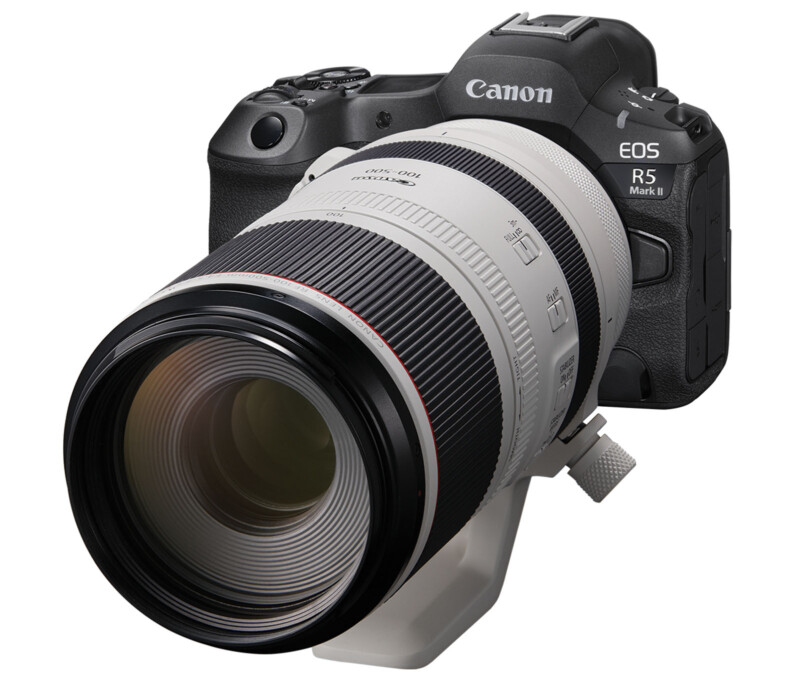
The a7R V has 693 autofocus points, and its focusing is rated down to -4 EV. The Nikon Z8 has 493 points but is rated at an incredible -9 EV. When it comes to low-light autofocus, it’s the clear winner of the three.
All three cameras include AI-assisted subject detection modes and deliver strong autofocus tracking performance. Subjectively, there’s not all that much to distinguish the cameras in terms of overall autofocus performance, but there are minor differences in consistency, tracking, and overall hit rates.
The Nikon Z8, built on the Z9’s architecture, is the best of the three overall. The a7R V is barely behind it, held back slightly by the slower sensor readout speed in situations with fast-moving subjects. The EOS R5 II, as it stands now based on initial experiences, slots into the third position.
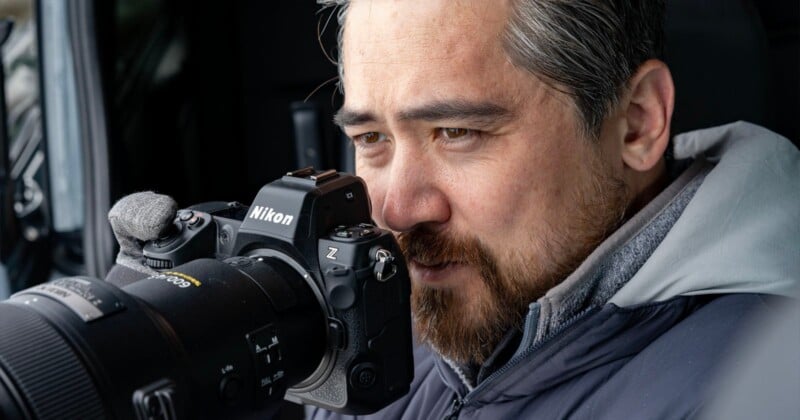
This is not to say the R5 II’s autofocus performance isn’t excellent, though. It almost feels as though Canon skipped a generation because the R5 II is just that much better than the R5 when it comes to autofocus performance. It’s a massive leap forward, even though it isn’t necessarily the best.
Further, the R5 II inherits Eye Control AF from the R3 and new R1, which enables users to move the autofocus zone around the frame using their eyes through the EVF. It’s an incredible feature when it works, and for some, it could prove transformative. It is not just a gimmick; it truly can change the ease with which photographers can track moving subjects.
Verdict: The Canon EOS R5 II’s autofocus system is excellent on paper and in the real world. There’s no “bad” camera here, but slight differences concerning subject selection among a group and “stickiness” during subject tracking help break the tie: 1. Nikon Z8, 2. Sony a7R V, and 3. Canon EOS R5 II.
Body Design and Usability
Little is more subjective than how good a camera “feels” in use. These days, every camera is so good that one of the most important differentiating factors is how pleasant someone finds a particular camera to use. For Canon fans, the R5 II will feel incredible. It’s a well-designed camera.
There are still some objective measures to consider, like size and weight, electronic viewfinder performance, and the rear display.
The Canon EOS R5 II’s dimensions (width x height x depth) are 138.4 x 98.4 x 88.4 millimeters (5.5 x 3.9 x 3.5 inches), and the camera weighs 670 grams (1.5 pounds) with its battery and a memory card inserted.
The Sony a7R V is 131.3 x 96.9 x 82.4 millimeters (5.2 x 3.8 x 3.2 inches) and weighs 723 grams (1.6 pounds). The Nikon Z8 is 144 x 118.5 x 83 millimeters (5.7 x 4.7 x 3.3 inches) and tips the scales at 910 grams (about two pounds).
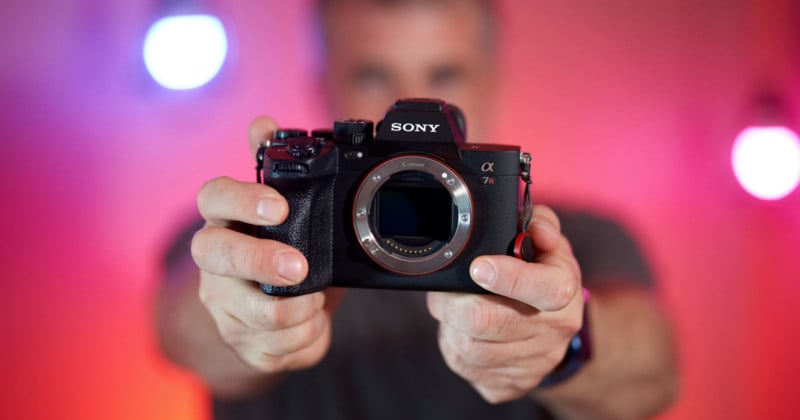
The R5 II is the lightest of the bunch and slots between the a7R V and Z8 in terms of overall size. They’re all big enough to be comfortable to use with long, heavy lenses but not so large that they don’t easily fit in a bag.
As for its viewfinder, the R5 II uses a 0.5-inch OLED with 5.76 million dots — the same EVF as the Canon EOS R3 features. It has 100% coverage and 0.76x magnification. Canon promises a blackout-free shooting experience with the R5 II, something the Nikon Z8 also offers.

The a7R V’s EVF is a 0.64-inch OLED panel with 9.44 million dots and 0.9x magnification. The EVF is excellent, but its resolution can dip at faster frame rates, and it’s not entirely blackout-free.
The Nikon Z8 has the lowest-res EVF of the bunch, with 3.69 million dots. The 0.5-inch OLED EVF has 0.8x magnification.
There are other display differences between the three cameras. The Canon EOS R5 II and Nikon Z8 both include secondary displays on the top of the camera, while the a7R V doesn’t.
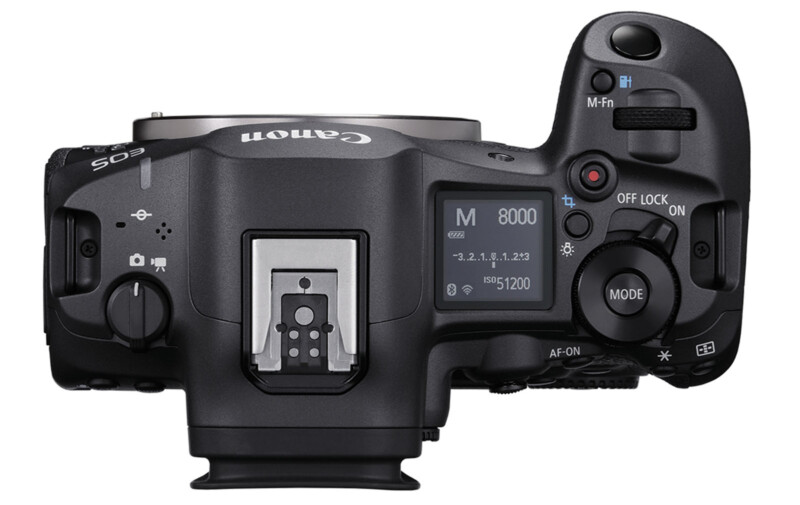
As for rear displays, all three cameras have 3.2-inch panels, and they all offer tilt and swivel capabilities, although the Z8’s display doesn’t pop out to the side for self-facing recording. The displays are also so close to each other regarding pixel count (2.1 million dots) that they might as well be identical.
Verdict: For photographers who like how Canon cameras feel, the R5 II is the best here. That said, there are cases to be made for the others, especially the Z8. The a7R V generally offers the worst user experience of the three, but it does have the biggest and sharpest EVF.
Video
The Canon EOS R5 II and Nikon Z8 are targeted more toward hybrid users than the a7R V. To that end, the R5 II has some serious video chops. The camera includes a waveform monitor, zebra display, four-channel audio, and HDR video, for example.

The R5 II records 8K (16:9 UHD and 17:9 DCI) video at up to 30p and 4K (including oversampled 8K) at up to 60p. The 8K DCI footage uses the entire sensor width, too.
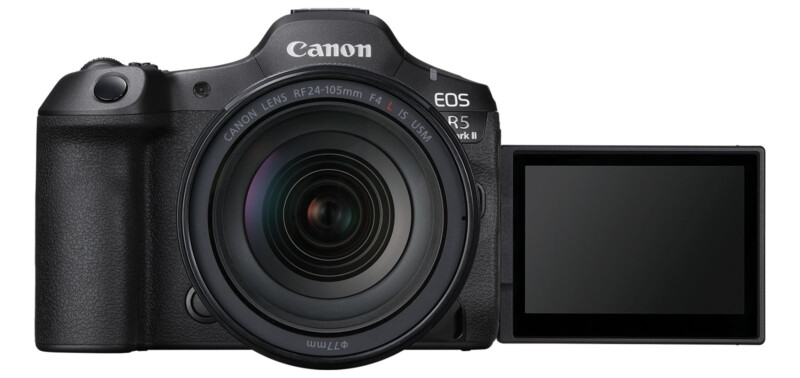
Meanwhile, on the a7R V, 8K is capped at 24/25p and, like its 4K/60p video, is cropped.
The Nikon Z8 can shoot 8K 12-bit N-RAW at up to 60p and 4K/120p 12-bit video. It also does this without a crop, helping make the Z8 an excellent video camera, well up to the task of fitting within a professional workflow.
There’s also the elephant in the room: Will the R5 II overheat like the R5? Well, it’s too early to tell. But Canon has definitely heard all the complaints about the original R5 — and announced an optional cooling fan grip for the R5 II alongside two more traditional vertical grips (one with an Ethernet port and one without) — so there’s reason for optimism.
Verdict: At this point, it’s safe to say the Canon EOS R5 II and Nikon Z8 are both better video cameras than the a7R V. The Z8 offers a bit more in terms of video modes, but the R5 II is undoubtedly a compelling hybrid camera.
Canon EOS R5 II Versus the Competition
The Canon EOS R5 Mark II has the unfortunate distinction of being overshadowed by the new flagship EOS R1. While the R1 may suck up quite a bit of the air in the room, the R5 II is an absolute dynamite camera, and a vast improvement upon the original, popular R5.
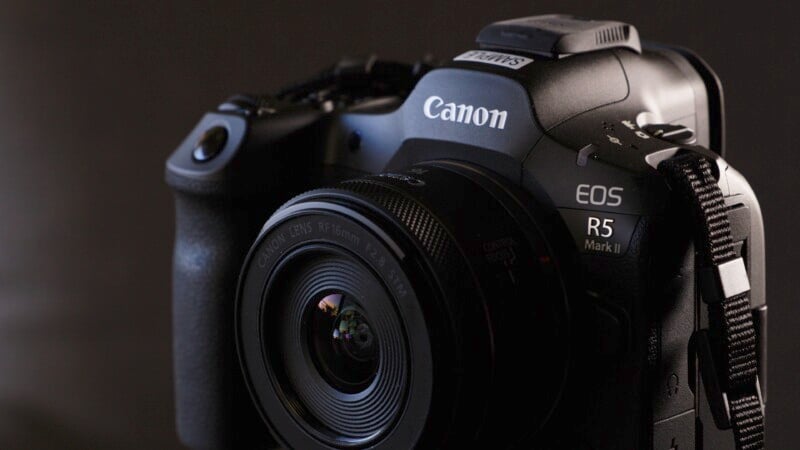
The Canon R5 II improves upon its predecessor in essentially every way. The gains in autofocus and performance are noteworthy and help the R5 II go toe-to-toe with its competition.
While not the “best” camera, the R5 II is excellent. Although wildlife photographers may have reason to opt instead for the Z8, and the a7R V offers a bit more resolution for pixel peepers, the R5 II is a versatile camera that makes a solid claim to be Canon’s best overall mirrorless camera for most people. It should prove adept at nearly everything.
Image credits: Canon, Nikon, and Sony. Additional photos by Jordan Drake and David Schloss. Header image created using an asset licensed via Depositphotos.
